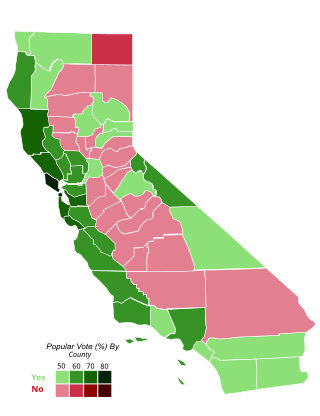
A cash register, sometimes called a till, cashbucker, or automated money handling system, is a mechanical or electronic device for registering and calculating transactions at a point of sale. It is usually attached to a drawer for storing cash and other valuables. A modern cash register is usually attached to a printer that can print out receipts for record-keeping purposes.

The point of sale (POS) or point of purchase (POP) is the time and place at which a retail transaction is completed. At the point of sale, the merchant calculates the amount owed by the customer, indicates that amount, may prepare an invoice for the customer, and indicates the options for the customer to make payment. It is also the point at which a customer makes a payment to the merchant in exchange for goods or after provision of a service. After receiving payment, the merchant may issue a receipt, as proof of transaction, which is usually printed but can also be dispensed with or sent electronically.

Shoplifting, shop theft, retail theft, or retail fraud is the theft of goods from a retail establishment during business hours, typically by concealing a store item on one's person, in pockets, under clothes or in a bag, and leaving the store without paying. With clothing, shoplifters may put on items from the store and leave the store wearing the clothes. The terms shoplifting and shoplifter are not usually defined in law. The crime of shoplifting generally falls under the legal classification of larceny. Shoplifting is distinct from burglary, robbery, or armed robbery. In the retail industry, the word shrinkage can be used to refer to merchandise lost by shoplifting, but the word also includes loss by other means, such as waste, uninsured damage to products and theft by store employees.

CVS Pharmacy, Inc. is an American retail corporation. A subsidiary of CVS Health, it is headquartered in Woonsocket, Rhode Island. Originally named the Consumer Value Stores, it was founded in Lowell, Massachusetts in 1963.

Online shopping is a form of electronic commerce which allows consumers to directly buy goods or services from a seller over the Internet using a web browser or a mobile app. Consumers find a product of interest by visiting the website of the retailer directly or by searching among alternative vendors using a shopping search engine, which displays the same product's availability and pricing at different e-retailers. As of 2020, customers can shop online using a range of different computers and devices, including desktop computers, laptops, tablet computers and smartphones.

A receipt is a document acknowledging that a person has received money or property in payment following a sale or other transfer of goods or provision of a service. All receipts must have the date of purchase on them. If the recipient of the payment is legally required to collect sales tax or VAT from the customer, the amount would be added to the receipt, and the collection would be deemed to have been on behalf of the relevant tax authority. In many countries, a retailer is required to include the sales tax or VAT in the displayed price of goods sold, from which the tax amount would be calculated at the point of sale and remitted to the tax authorities in due course. Similarly, amounts may be deducted from amounts payable, as in the case of taxes withheld from wages. On the other hand, tips or other gratuities that are given by a customer, for example in a restaurant, would not form part of the payment amount or appear on the receipt.
Drop shipping is a form of retail business in which the seller accepts customer orders without keeping stock on hand. Instead, in a form of supply chain management, the seller transfers the orders and their shipment details either to the manufacturer, a wholesaler, another retailer, or a fulfillment house, which then ships the goods directly to the customer.

Retail loss prevention is a set of practices employed by retail companies to preserve profit. Loss prevention is mainly found within the retail sector but also can be found within other business environments.
Electronic article surveillance (EAS) is a type of system used to prevent shoplifting from retail stores, pilferage of books from libraries, or unwanted removal of properties from office buildings. EAS systems typically consist of two components: EAS antennas and EAS tags or labels. EAS tags are attached to merchandise; these tags can only be removed or deactivated by employees when the item is properly purchased or checked out. If merchandise bearing an active tag passes by an antenna installed at an entrance/exit, an alarm sounds alerting staff that unauthorized merchandise is leaving the store. Some stores also have antennas at entrances to restrooms to deter shoppers from taking unpaid-for merchandise into the restroom where they could remove the tags.

A fence, also known as a receiver, mover, or moving man, is an individual who knowingly buys stolen goods in order to later resell them for profit. The fence acts as a middleman between thieves and the eventual buyers of stolen goods who may not be aware that the goods are stolen.
A store detective is a member of loss prevention whose main role is to prevent and detect theft and reduce shrink in retail outlets. They do this by patrolling the store in plain clothes looking to identify members of the public who are stealing from the store. More common terms today with major retailers are loss prevention agent, detective or investigator and asset protection officer. Special officer, once common, is now rarely used, as it is typically denotes some form of law enforcement authority, and some jurisdictions limit its use.

Self-checkouts (SCOs), also known as assisted checkouts (ACOs) or self-service checkouts, are machines that provide a mechanism for customers to complete their own transaction from a retailer without needing a traditional staffed checkout. When using SCOs, customers scan item barcodes before paying for their total shop without needing one-to-one staff assistance. Self-checkouts are used mainly in supermarkets, although they are not uncommon in department or convenience stores. Most self-checkout areas are supervised by at least one staff member, often assisting customers process transactions, correcting prices, or otherwise providing service.
Refund theft, also known as refund fraud, refund scam or whitehouse scam, is a crime which involves returning goods ineligible for refund to a retailer in exchange for money or other goods. The goods returned may have been acquired illegally, or they may be discarded damaged goods. Other schemes involve sealing weights or other simulated merchandise in the original product packaging, or switching labels on items to purchase them at a lower price and then returning them for their original value.

Once the strategic plan is in place, retail managers turn to the more managerial aspects of planning. A retail mix is devised for the purpose of coordinating day-to-day tactical decisions. The retail marketing mix typically consists of six broad decision layers including product decisions, place decisions, promotion, price, personnel and presentation. The retail mix is loosely based on the marketing mix, but has been expanded and modified in line with the unique needs of the retail context. A number of scholars have argued for an expanded marketing, mix with the inclusion of two new Ps, namely, Personnel and Presentation since these contribute to the customer's unique retail experience and are the principal basis for retail differentiation. Yet other scholars argue that the Retail Format should be included. The modified retail marketing mix that is most commonly cited in textbooks is often called the 6 Ps of retailing.
Bulk purchasing or mass buying is the purchase of much larger quantities than the usual, for a unit price that is lower than the usual.

In accounting, shrinkage or shrink occurs when a retailer has fewer items in stock than were expected by the inventory list. This can be caused by clerical error, or from goods being damaged, lost, or stolen between the point of manufacture and the point of sale. High shrinkage can adversely affect a retailer's profit.

In retail, a product return is the process of a customer taking previously purchased merchandise back to the retailer, and in turn receiving a refund in the original form of payment, exchange.
Book store shoplifting is a problem for book sellers and has sometimes led stores to keep certain volumes behind store counters.
In the retail industry, sweethearting is a form of theft by employees at the cash register, where they give away merchandise to a "sweetheart" customer. Cashiers are able to do this in numerous ways, including:

Proposition 47, also known by its ballot title Criminal Sentences. Misdemeanor Penalties. Initiative Statute, was a referendum passed by voters in the state of California on November 4, 2014. The measure was also referred to by its supporters as the Safe Neighborhoods and Schools Act. It recategorized some nonviolent offenses as misdemeanors, rather than felonies, as they had previously been categorized.












